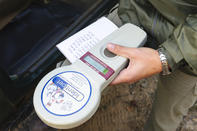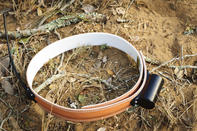
Electronic Deterrents
Instead of throwing lion dung in your camp to scare predators away, farmers can now buy electronic solar powered deterrents, such as the Skaapwagter, that emits a substance that not only irritates the noses of predators but also emits ultra-high frequencies that drive predators away.
The emitted sound is said to be barely audible to humans and sheep, but excruciating to predators. These devices are most effective in windless conditions and should not be seen as a stand-alone solution, but part of a holistic management approach.
The Old-fashioned Deterrents
Instead of buying an expensive electronic deterrent, farmers can use radios to create different sounds in different places in an enclosure, changing and moving them every night. The same can be done with strategically placed yellow, orange and white lights.
The Predation Management Forum, advises farmers to use these deterrents for six-week intervals with a month’s break in between. Scent devices should not be used for more than six weeks, to prevent predators from getting used to the scent and be alternated with sound and light deterrent devices.
Ultrasonic sounds should not be used for more than five weeks at a time and also, not near owls or bats. They should also be altered with other sounds.
Trackers

Another way to safeguard livestock is by letting them “phone you when they are in trouble”. Various solutions have been developed out of this idea, predominantly in the form of a collar with a GPS Tracker that is linked to an app on a farmer’s phone.
The collar is placed on one of the animals in a herd. Tracking this one animal will give the farmer an indication of what the rest of the herd is doing, since herd animals usually stick together in groups.
The device usually sends an SMS or creates an alarm, when unnatural movement occurs. In other words, when the animal all of a sudden starts running for no apparent reason.
The collars not only helps with predation management, but is also highly effective in helping to prevent stock theft. Farmers often use the tracker along with a couple of fake trackers to confuse potential stock thieves.